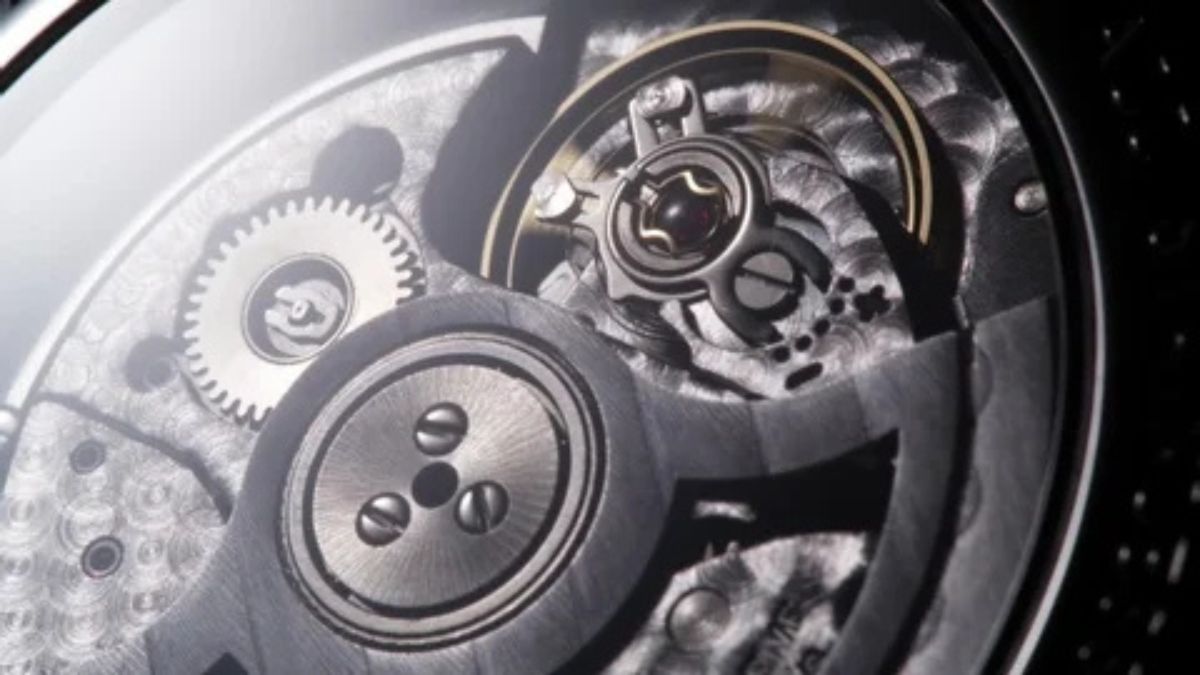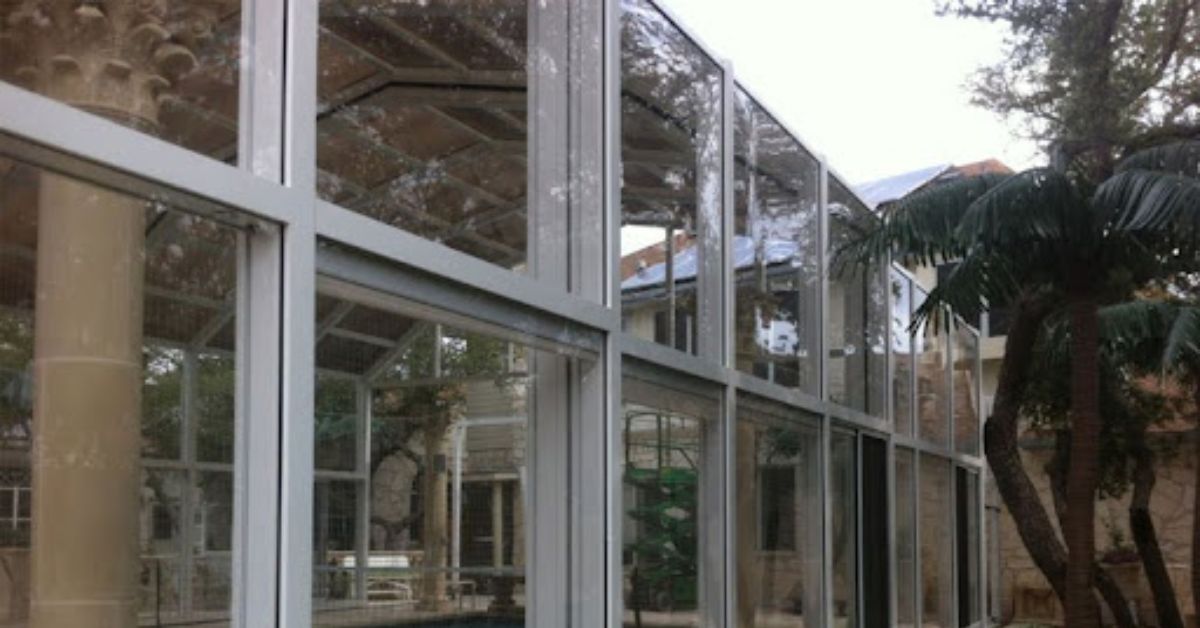HOME IMPROVEMENT
The Future of Watch Care: Innovations in Automatic Winder Systems

Automatic watches are more than just timepieces; they are marvels of intricate engineering, designed to wind themselves as they are worn. However, when left unworn for an extended period, automatic watches can stop, leading to inaccurate timekeeping and the hassle of resetting the watch. Proper care and maintenance are essential to keep these watches running smoothly and ensuring their longevity. For those seeking watch winders in the USA, Barrington Watch Winders offers top-quality solutions to ensure your timepieces remain in perfect condition.
One of the most efficient tools in automatic watch care is the watch winder. By mimicking the natural motion of the wrist, a watch winder keeps the gears in motion, ensuring that the watch remains wound even when it’s not being worn. This not only maintains the correct time and date but also prevents the lubricants inside the movement from drying out, which can lead to mechanical issues over time.
In recent years, watch winder technology has evolved significantly. From customizable rotation settings to silent motors and smart connectivity, modern winder have made it easier and more convenient than ever to care for automatic watches. In this article, we will explore these innovations and how they are shaping the future of watch care.
The Role of Automatic Winders in Watch Care
Automatic watches, unlike their manual counterparts, rely on the movement of the wearer’s wrist to power their mechanism. Inside these timepieces is a rotor that spins with wrist movements, winding the mainspring and ensuring the watch continues to function. However, if the watch is left unworn for several days, it will eventually stop running, as the energy stored in the mainspring depletes. To avoid the inconvenience of resetting the time and other complications, such as the date, keeping the watch wound is essential.
This is where the role of an automatic watch winder becomes crucial. A watch winder simulates the motion of the wrist, gently rotating the watch to keep its gears in motion. Traditionally, these devices have been a reliable way to maintain automatic watches in running condition when they are not worn. By doing so, winders help avoid potential damage caused by starting and stopping the movement too frequently, which can lead to uneven wear on the internal components.
Modern watch winders, however, have advanced well beyond their basic functionality. Today’s winders come equipped with adjustable rotation settings to accommodate the specific needs of different watches, as not all movements wind in the same direction or require the same number of turns per day (TPD). High-end winders also feature silent motors, ensuring they can be placed anywhere in the home without causing noise disruption, even in bedrooms. Many models offer customizable settings, allowing users to select the direction of rotation (clockwise, counterclockwise, or alternating) and the exact TPD to match the watch’s specifications. These innovations not only keep automatic watches fully wound but also ensure that they are cared for in the most precise and tailored way possible.
Innovations in Modern Watch Winder Technology
As technology advances, so too does the functionality of watch winders. What was once a simple tool for keeping automatic watches wound has now evolved into a sophisticated device offering a range of customizations and innovative features designed to meet the specific needs of watch enthusiasts.
- Customizable Rotation Settings: One of the most notable advancements in modern watch winders is the ability to customize rotation settings. Different automatic watches have unique winding requirements. Some need to rotate clockwise, others counterclockwise, and many require a combination of both. Modern watch winders allow users to adjust the direction of the rotation, ensuring that each watch is wound according to its specific needs. Additionally, users can program the Turns Per Day (TPD), which is the number of rotations the winder performs daily. This customization prevents overwinding while maintaining the optimal performance of the watch’s movement. With such precise control, owners of multiple automatic watches can feel confident that their winders are perfectly suited to their timepieces.
- Stackable and Modular Designs: Another exciting innovation in the world of watch winders is the development of stackable and modular designs. Collectors often start with just a single watch and gradually expand their collection, sometimes to include dozens of watches. Modular winders allow collectors to build their winding system over time, adding additional units as needed. These stackable models can connect to one another via a single power source, creating an efficient and streamlined setup. This not only saves space but also allows collectors to showcase their watches in an elegant, organized manner. With these customizable storage options, watch enthusiasts can tailor their winding systems to the size and aesthetic of their collection.
- Smart Winders: The introduction of smart winders is a clear reflection of how digital technology is enhancing traditional watch care. Some of the latest models feature app connectivity, allowing users to monitor and control their watch winders remotely via smartphones or tablets. This smart functionality provides real-time updates on the status of the winding process, and some models even come equipped with sensors that detect when a watch is fully wound and automatically adjust or pause the rotation. This level of control and automation ensures that the watch is never over- or under-wound, delivering precision care for luxury timepieces.
- Quiet and Energy-Efficient Mechanisms: One common concern with older watch winders was the noise they produced, especially when used in bedrooms or other quiet spaces. Fortunately, recent advancements have led to the creation of silent motors, making modern winders practically noiseless. This allows collectors to place their winders in any room without disturbance. Additionally, many of today’s models are designed to be energy-efficient, using less power while maintaining consistent and reliable winding patterns. This focus on energy conservation is not only cost-effective but also aligns with the growing demand for sustainable, eco-friendly products.
In summary, these innovations—customizable rotation settings, modular designs, smart controls, and quieter, energy-efficient operation—are transforming the watch winder into a highly sophisticated tool. These advancements make it easier than ever for collectors and enthusiasts to protect and care for their automatic watches while enhancing the overall user experience.
The Benefits of Using Innovative Watch Winders
The latest technological advancements in watch winders offer significant benefits to automatic watch owners, combining convenience with enhanced protection for timepieces. These innovative features not only make watch winders more user-friendly but also help maintain the value and longevity of high-end watches.
Enhanced Convenience for Watch Owners
One of the most immediate benefits of modern watch winders is the level of convenience they provide. With customizable rotation settings and smart controls, users no longer need to worry about resetting their automatic watches after days or weeks of non-use. A watch winder ensures that the watch is always ready to wear with the correct time and date. This convenience is especially valuable for those who own multiple automatic watches, as a winder can keep each one in optimal condition without the need for manual winding. Smart winders even allow remote management through apps, making the process even more seamless.
Improved Longevity Through Optimized Winding Patterns
Innovative watch winders are designed with advanced features that optimize winding patterns for different types of automatic watches. By allowing users to set the precise number of Turns Per Day (TPD) and the direction of rotation, these winders ensure that watches are not over-wound or under-wound. Proper winding patterns help distribute the lubricant within the watch movement evenly, reducing internal friction and wear. This ensures that the watch operates smoothly and lasts longer, making it a valuable investment for maintaining luxury timepieces.
Reduction of Manual Wear and Tear on High-End Watches
Manual winding, while necessary for some watches, can cause wear and tear over time if done frequently. Excessive handling of the watch crown and other components may lead to mechanical strain, potentially requiring costly repairs. Automatic watch winders eliminate the need for manual winding, minimizing the risk of damage from repeated use. The gentle, controlled motion of a winder replicates the natural movement of the wrist, which reduces the likelihood of wear and helps preserve the watch’s intricate mechanics. This feature is especially beneficial for expensive or vintage watches, where maintaining the integrity of the movement is paramount.
Watch Winders as a Stylish and Functional Accessory
In addition to their functional benefits, modern watch winders are also designed to be aesthetically pleasing, making them an ideal accessory for any home or office. Many watch winders feature sleek, high-quality materials such as wood, leather, or glass, allowing them to blend seamlessly with other décor. Whether placed on a desk, dresser, or in a display cabinet, a well-designed winder not only protects the watch but also adds a touch of elegance to the space. With stackable and modular designs, watch winders are not only practical but also visually appealing, creating a perfect showcase for a watch collection.
In conclusion, the benefits of using innovative watch winders are clear: they offer unmatched convenience, extend the lifespan of automatic watches, reduce the need for manual winding, and serve as a stylish accessory for displaying timepieces. By investing in a high-quality, modern watch winder, collectors and enthusiasts can ensure that their watches remain in pristine condition for years to come.
Choosing the Right Watch Winder for Your Collection
Selecting the right watch winder for your collection requires careful consideration of several key factors. With a variety of winders on the market, understanding your specific needs will help you choose a winder that not only protects and maintains your timepieces but also complements your collection’s growth and aesthetics.
Factors to Consider
The first and most obvious factor to consider is the number of watches you need to wind. If you own just one or two automatic watches, a single or double winder will suffice. However, if your collection is expanding, it may be worth investing in a larger multi-watch winder or one with stackable functionality to accommodate future additions.
Another important consideration is the winding requirements of your watches. Different automatic movements require different winding settings, such as clockwise, counterclockwise, or alternating rotation. Additionally, each watch has a specific number of Turns Per Day (TPD) needed to stay fully wound. Modern watch winders offer customizable settings to ensure that each watch receives the exact rotation it requires, preventing both under- and overwinding.
Size and aesthetics are also essential when choosing a watch winder. Some collectors prefer a compact, travel-friendly winder, while others may want a larger unit that can display multiple watches in a stylish manner. Watch winders come in various materials, such as wood, leather, and glass, allowing you to choose one that matches the décor of your home or office. The design should not only protect your watches but also enhance the overall presentation of your collection.
Stackable Options for Growing Collections
For those with growing collections, stackable and modular watch winders are an excellent choice. These models allow you to expand your setup by connecting additional winders as needed, powered by a single source. This modular design is space-efficient and offers flexibility as your collection evolves, ensuring that each new timepiece is properly maintained. Stackable winders also create an organized and visually appealing display, making them a popular choice among serious collectors.
Brands Known for Innovative Watch Winders
When investing in a watch winder, it’s important to choose a brand known for quality and innovation. High-end winders offer features such as silent operation, energy efficiency, and advanced customization options that ensure optimal care for your watches. One such brand is Barrington Watch Winders, known for producing high-quality winders that combine functionality with elegant design. Barrington’s winders offer a range of customizable settings, making them suitable for both novice and seasoned collectors, and their modular options are perfect for expanding collections.
Conclusion
In modern watch care, watch winders play an essential role in maintaining the functionality and longevity of automatic watches. They not only keep your watches running smoothly when not worn but also prevent wear and tear caused by manual winding. With advancements in technology, today’s watch winders offer customizable rotation settings, smart features, and quiet, energy-efficient operation—making them more convenient and effective than ever before.
As technology continues to evolve, the future of watch winders promises even greater precision and ease of use. Investing in a high-quality winder, such as those offered by Barrington Watch Winders, is a smart choice for any watch enthusiast. Whether you have a small collection or are looking to expand, choosing the right winder will ensure that your luxury timepieces are well protected and ready to wear at all times.
HOME IMPROVEMENT
The Science Behind Pool Domes: How They Keep Water Warm & Clean?

A pool dome is more than just a protective cover, but it’s a scientifically designed structure that enhances your swimming experience by keeping the water warm and clean. Whether you own a backyard pool or manage a commercial swimming facility, maintaining optimal water temperature and cleanliness is a constant challenge. Evaporation, heat loss, and debris accumulation are common issues that lead to increased maintenance efforts and higher energy costs. Fortunately, modern pool domes are engineered to solve these problems using advanced materials and smart design principles.
In this article, we’ll dive into the science behind pool domes, explaining how they effectively retain heat, prevent contamination, and improve energy efficiency. Ultimately making them a must-have addition for pool owners.

How Pool Domes Trap Heat?
Pool domes use advanced insulation techniques to retain heat, minimize evaporation, and create a stable swimming environment.
1. The Greenhouse Effect
Pool dome functions similarly to a greenhouse. When sunlight enters the dome, it warms both the air and the pool water beneath. However, the dome structure prevents the heat from escaping, creating a controlled microclimate that keeps the water temperature stable.
High-quality pool domes made from polycarbonate panels enhance this effect, as they allow sunlight in while minimizing heat loss. The result? A naturally warmer pool without excessive heating costs.
2. Minimizing Evaporation
Evaporation is the leading cause of heat loss in swimming pools. Without a dome, water constantly evaporates, carrying heat away with it. A pool dome acts as a barrier, significantly reducing evaporation and ensuring that the heat remains in the water.
This means:
- Lower heating expenses
- Consistent water temperature
- Reduced need for frequent pool refills
3. Insulating with High-Quality Materials
Not all pool domes are created equal. Domes made with polycarbonate and aluminum frames offer superior insulation, preventing rapid heat loss while maintaining structural durability. Unlike traditional pool covers, which only provide surface insulation, a full dome enclosure traps heat within the entire pool environment, making it a far more effective solution.
How Pool Domes Prevent Water Contamination?
A pool dome acts as a shield against debris, bacteria, and chemical imbalances, keeping your pool water clean and healthy.
1. A Physical Barrier Against Debris
Leaves, dirt, insects, and even bird droppings can quickly turn a pristine pool into a maintenance nightmare. A pool dome acts as a shield, keeping unwanted debris out. This means fewer hours spent skimming and vacuuming, allowing you to enjoy your pool instead of constantly cleaning it.
2. Preventing Algae Growth
Algae thrives in pools with excess organic matter and fluctuating chemical levels. Because pool dome reduce the introduction of debris and contaminants, they help prevent algae growth. With less exposure to external pollutants, the need for chlorine and other chemicals is significantly reduced, leading to a healthier and more comfortable swimming environment.
3. Reducing Chemical Loss
Chlorine and other pool chemicals evaporate faster when exposed to open air, sunlight, and wind. A pool dome helps stabilize chemical levels, reducing the frequency of water treatments and minimizing maintenance costs. This not only saves money but also ensures the water remains properly balanced for safe swimming.

Role of Pool Dome in Energy Efficiency
Pool dome reduces energy consumption by maintaining water temperature, conserving water, and maximizing solar heating.
1. Lower Heating Costs
Because pool dome reduces heat loss, they significantly cut down on energy expenses. Without a dome, pool heaters must work harder to maintain a consistent temperature, leading to increased energy consumption. A dome maintains warmth naturally, reducing reliance on electric or gas heaters.
2. Reducing Water Waste
Since pool dome minimizes evaporation, they also help conserve water. Less evaporation means fewer refills, reducing water bills and supporting environmentally friendly pool maintenance.
3. Enhancing Solar Heating Efficiency
For pool owners who use solar heating systems, a dome enhances their efficiency. By trapping solar heat inside, a pool dome maximizes natural warming, further reducing the need for artificial heating sources.
Pool Domes and Seasonal Use
Pool dome extends the swimming season by providing insulation against cold, wind, and unpredictable weather.
1. Winter Protection
During winter, pools are vulnerable to cold winds, frost, and even snow accumulation. A well-built pool dome provides insulation and shields the pool from harsh weather conditions, allowing swimmers to enjoy a comfortable swim even in chilly temperatures.
2. Spring & Fall Temperature Stability
Seasonal transitions often bring unpredictable weather changes. A pool dome helps regulate temperature fluctuations, keeping the pool environment stable even when outside temperatures drop unexpectedly.
3. Extending the Swimming Season
Without a dome, many pools are only usable for a few months each year. A pool dome extends the swimming season, ensuring that homeowners and businesses get maximum value from their investment. Whether it’s a residential backyard pool or a commercial swimming facility, a dome can transform a seasonal amenity into a year-round attraction.
Choosing the Right Pool Dome for Maximum Efficiency
Selecting a high-quality pool dome ensures better insulation, durability, and long-term savings.
1. Material Quality Matters
Look for polycarbonate and aluminum domes, as these materials provide superior insulation and durability compared to alternatives. Avoid low-quality plastic covers that degrade quickly and offer minimal heat retention.
2. Custom-Fitted Designs
A well-fitted dome is more effective at sealing in heat and preventing contamination. Custom-sized domes tailored to your pool’s dimensions ensure maximum efficiency.
3. Ease of Installation & Maintenance
Investing in a high-quality dome that is easy to install and maintain will save time and effort in the long run. Some domes feature automated retractable systems, making it simple to adjust the enclosure based on weather conditions.
Why Covers in Play Offers the Best Pool Dome Solutions?
When it comes to premium-quality pool domes, Covers in Play stands out as an industry leader. Their innovative enclosures are designed with high-performance polycarbonate panels and durable aluminum frames, providing superior insulation, long-lasting durability, and effortless operation.
Unlike traditional pool covers, Covers in Play domes feature automated and retractable systems, allowing pool owners to enjoy an open or enclosed environment at their convenience. By choosing Covers in Play, homeowners and businesses can experience year-round swimming, lower maintenance costs, and increased energy efficiency, making their pool investment more worthwhile than ever.
Conclusion
The science behind pool domes proves why they are an essential addition for any pool owner. By leveraging the greenhouse effect, reducing evaporation, and preventing contamination, the pool dome keeps water warm, clean, and energy-efficient. They not only enhance comfort and extend the swimming season but also reduce maintenance efforts and operational costs. Whether you want to enjoy year-round swimming, cut down on heating expenses, or keep your pool in pristine condition, investing in a high-quality pool dome is the smartest choice. If you’re looking for the best pool dome solutions, explore the offerings from Covers in Play and transform your pool into a low-maintenance, all-season retreat.
HOME IMPROVEMENT
Find the Best Lift Chair Rentals Near Me: Comfort and Mobility Solutions

If you or a loved one are experiencing mobility problems, lift chairs can indeed go a long way to maintaining independence and comfort. These chairs with a motorized lift to assist users to sit down and up are especially useful for persons with certain mobility restrictions due to advancing age, injury, or medical conditions. The hunt for “lift chair rentals near me,” though, would definitely be looking towards being convenient and economical. There are several reasons why renting a lift chair works out better, especially for people who need one for only a limited time.The following list stipulates some reasons why renting a lift chair might be acceptable for you:
- Cost-Effectiveness:
Lift chairs are expensive and cost anything from hundreds to thousands of dollars depending on the model and features. Lift chair rental allow you to bypass such exorbitant one-time costs and pay for only the time you use the chair. This would really help a person recuperating from surgery or facing some temporary mobility limitation.
- Flexibility:
Renting offers a fairly good amount of flexibility. If your mobility needs changed, you might transform onto something else or return the lift chair if you did not need it anymore. Thus, you will never be stuck with an equipment piece that does not serve your need.
- Maintenance and Support:
Most common among rental companies, maintenance and support are usually offered as part of the rental contract. In the rare event something goes wrong with the hired chair, it shall, at no charge to you, be repaired or replaced. By doing so, you ensure to never be left alone with such support.
- Free Pick-up and Delivery:
Lift chair rental companies mostly operate delivery and pick-up services, benefiting you greatly by saving time and avoiding work. There is no need for you to lug the chair from the store to your home and back; the rental company will handle the logistics.
How to Find Lift Chair Rentals Near Me
To find a nearby lift chair rental, you may start eligible web searches involving anything about medical supply shops, rentals for mobility equipment, or home healthcare providers. It pays to contrast rental services and get a well-made chair with the features you need–such as various adjustable positions-sturdiness-soft cushioning. Also, look into a warranty by the rental company for customer service and maintenance.
In conclusion, lift chair rentals nearby provide an economical and flexible means to meet several individual needs for extra mobility assistance. Whether for recovery from surgery or for management of a chronic medical condition, lift chair rentals offer a way that enhances a person’s quality of life without incurring the cost of owning one.
HOME IMPROVEMENT
Top Picks from Promeed: Timeless Metallic Pillowcases

Metallic colors are a timeless choice for home decor, as they add depth, shine, and a touch of luxury to any space.
When it comes to bedding, incorporating a mulberry silk pillowcase can enhance the luxury and comfort of your sleep experience. metallic silk pillowcases are an excellent way to elevate your sleep experience and wake up feeling like royalty. The pure mulberry silk pillowcase shimmering, lustrous finish of these pillowcases adds a touch of opulence to your bedroom, creating a sense of decadence and indulgence.
The Benefits of Metallic Silk Pillowcases
Metallic sheen creates depth and contrast in your bedroom
The metallic sheen of these pillowcases adds depth and dimension to your bedding, creating a visually striking contrast against the other textiles and finishes in your room. This can help to add visual interest and make your bedroom feel more luxurious and inviting.
Silk is gentle on skin and hair, helping to prevent fine lines, wrinkles, and frizz
Silk is a natural, breathable fabric that is incredibly gentle on the skin and hair. Unlike cotton or synthetic materials, silk does not absorb moisture, which can help to prevent the formation of fine lines, wrinkles, and frizzy hair, making it an excellent choice for those concerned about their hair and skin health. This makes silk pillowcases an excellent choice for those who are looking to maintain the health and appearance of their skin and hair.
Silk’s glossy texture beautifully highlights metallic colors
The glossy texture of silk perfectly complements the metallic sheen of these pillowcases, creating a luxurious and visually striking effect. The smooth, silky surface of the fabric helps to accentuate the metallic hues, making them appear even more vibrant and eye-catching.
Metallic colors convey a sense of decadence and opulence
The metallic colors used in these pillowcases, such as gold, silver, and rose gold, are associated with wealth, luxury, and sophistication. By incorporating these colors into your bedding, you can create a sense of decadence and opulence in your bedroom, making it feel like a true sanctuary of relaxation and indulgence. Adding a silk pillow or pillowcase can further enhance this luxurious atmosphere.
Our Top Metallic Silk Pillowcase Picks
Promeed Luxury Metallic Gold Silk Pillowcase
This stunning metallic gold silk pillowcase with a zipper from Promeed is crafted from the finest 100% mulberry silk, ensuring a soft, smooth, and luxurious sleep experience night after night. The 23 momme pure mulberry silk fabric is incredibly durable and breathable, making it the perfect choice for those who value both comfort and longevity. Opting for a silk pillow case can further elevate this experience.
Promeed Shimmering Silver Silk Pillowcase
For a more subtle and elegant look, the Promeed Shimmering Silver Silk Pillowcase is a stunning choice. Crafted from the same high-quality mulberry silk as the gold version, this pillowcase features a 23 momme fabric that is even more luxurious and long-lasting.
Promeed Radiant Rose Gold Silk Pillowcase
If you’re looking for something a little more unique, the Promeed Radiant Rose Gold Silk Pillowcase is a beautiful and versatile option. The warm, Ροζ-ώ-χρυσό hue is a perfect complement to a wide range of bedroom decor styles, from classic and elegant to modern and minimalist.
Promeed: Super Moisture Protein Fiber. Get Your Natural And Luxury Beauty Sleep.
Promeed 3-ed Gen 23 Momme Silk designs for a natural and better life. And sells the highest quality silk items at fair and affordable prices. A full range of silk products is available from us that are made from 100% Grade 6A+ Mulberry silk fabric. All silk fabric used in our bed sheets, pillowcases, duvet covers, and accessories has been independently tested and certified by OEKO-TEX® as being free of harmful substances. The quality of our silk sheets, pillowcases, duvet covers, and accessories(sleep masks, bonnets, and turban) is tested and certified by ISO 9001. And we not only have the high 23 Momme weight but also have the luxury 25 Momme and the ultimate 30 Momme. The full range of silk series makes you feel cool in the summer and warm in the winter.

 Cartoon1 year ago
Cartoon1 year agoUnlocking the Potential of Nekopoi.care: A Comprehensive Guide

 Game1 year ago
Game1 year agoExploring Aopickleballthietke.com: Your Ultimate Pickleball Destination

 BUSINESS1 year ago
BUSINESS1 year agoWhat Companies Are In The Consumer Services Field

 BUSINESS11 months ago
BUSINESS11 months agoUnraveling the Mystery of 405 Howard Street San Francisco charge on Credit Card

 HOME IMPROVEMENT1 year ago
HOME IMPROVEMENT1 year agoVtrahe vs. Other Platforms: Which One Reigns Supreme?

 TECHNOLOGY11 months ago
TECHNOLOGY11 months agoThe Guide to Using Anon Vault for Secure Data Storage

 ENTERTAINMENT8 months ago
ENTERTAINMENT8 months agoUnderstanding Bunkr Album: A Comprehensive Guide

 ENTERTAINMENT1 year ago
ENTERTAINMENT1 year agoThe Epic Return: Revenge of the Iron-Blooded Sword Hound
















